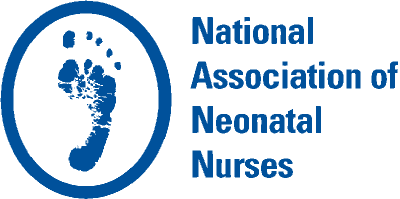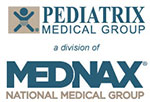Feature
Implications of the Opioid and Prescription Epidemic for Neonatal Providers: Complexities in Identifying and Managing Its Most Vulnerable Victims
Annie J. Rohan, PhD APRN FAANP
Neonatal withdrawal syndrome is a term that was introduced more than 2 decades ago to describe the variable spectrum of neurologic signs and behavioral dysregulation that occurs in neonates as a result of withdrawal from certain psychoactive drugs, particularly those that cause addiction in adults (Levy & Spino, 1993). More specifically, neurobehavioral findings associated with opioid withdrawal at birth, following in-utero exposure, have been termed neonatal abstinence syndrome (NAS; Hudak & Tan, 2012).
According to a recent Survey of Drug Use and Health, an annual survey sponsored by the Substance Abuse and Mental Health Services Administration, more than 22 million individuals age 18 years or older (>9% of Americans) were current illicit drug users or had used illicit drugs in the past month (Substance Abuse and Mental Health Services Administration, 2014). Furthermore, the face of drug addiction in the United States has changed over the past few years. Illicit use of prescription psychotherapeutics and opioids now overshadows the use of nonprescription illicit drugs (Manchikanti, Fellows, Ailinani, & Pampati, 2010). As the rate of opiate prescribing grows, so does fetal exposure to opioids in pregnancy and the incidence of NAS. Neonates who are exposed to opiates in-utero, as well as those who are exposed to selective serotonin reuptake inhibitors (SSRIs), barbiturates, benzodiazepines, and other substances, are at risk for dysfunctions in autonomic regulation, state control, and sensory and motor functioning after birth.
Evidence supporting the use of any one specific evaluation strategy to identify NAS in neonates is lacking. Maternal interview targeting prenatal substance exposure commonly is used; however, this approach has flaws. Maternal fear, guilt, and shame related to drug use limit truthful discussions between women and their healthcare providers (Murphy-Oikonen, Montelpare, Southon, Bertoldo, & Persichino, 2010). Selective toxicology screening using biological samples is another identification method, but it is limited by testing sensitivity, timing requirements, and heterogeneous application of screening criteria (Murphy-Oikonen et al., 2010). Toxicology screening obtained using restricted screening criteria including limited prenatal care, the age of the parent, or child custody issues may overshadow other important risk factors such as a history of pain syndromes or the use of multiple medical providers. Providers need to be aware that negative newborn toxicology screening does not rule out maternal substance use or abuse, nor does positive screening confirm abuse or addiction (Farst, Valentine, & Hall, 2011). Complicating the matter of accurate diagnosis further is that clinically significant withdrawal likely occurs only in a relatively small percentage of exposed babies (Kellogg, Rose, Harms, & Watson, 2011).
All substance-exposed neonates should receive individualized, supportive care. This necessitates a thorough evaluation of the baby’s state, behaviors, and responses to stimuli. Scoring instruments to assess the severity of withdrawal are important tools for determining the need for therapy, although interrater reliability, sensitivity, and specificity remains problematic in instrument development. Mothers have reported feeling judged by neonatal nurses and that an infant’s abstinence scores are sometimes assigned based on whether the nurse likes the mother (Cleveland & Gill, 2013). Researchers also have found that in applying NAS scoring tools to healthy, substance non-exposed infants, numerous scores reach the threshold suggestive of neonatal withdrawal, particularly in infants evaluated beyond the first week of age (Zimmermann-Baer, Nötzli, Rentsch, & Bucher, 2010). Results of this study have implications for the interpretation of abstinence scores, especially when used to evaluate infants beyond the neonatal period.
There is a widely variable spectrum of neurologic signs and behavioral dysregulation in the neonate that is associated with in-utero substance exposure, as well as variations among those born after different lengths of exposure. Gestational age appears to affect the severity of NAS, with milder signs developing in more premature infants. The reason for a blunted presentation may be central nervous system immaturity, lower fat deposition, or decreased total drug exposure (Jansson, Dipietro, Elko, & Velez, 2010; Logan, Brown, & Hayes, 2013). Third trimester exposure to SSRI antidepressants has been associated with a constellation of neonatal signs that are similar to those observed in NAS (Jansson & Velez, 2012). Although SSRI antidepressants have the potential to cause an abstinence syndrome, it has been suggested that some of these cases actually may represent serotonin toxicity or a combination of withdrawal and toxicity. It can be difficult to distinguish between withdrawal and toxicity because the signs for each are nonspecific and similar, although plasma concentrations of psychotropic drugs generally are low in withdrawal and high in toxicity (Alwan & Friedman, 2009).
Nonpharmacologic interventions for NAS may include targeted positioning (e.g., swaddling, therapeutic tucking), soothing techniques (e.g., nonnutritive sucking, gentle rocking, massage), and environmental modifications (e.g., a minimal-stimulation environment; Jansson & Velez, 2012). The American Academy of Pediatrics recommends pharmacologic treatments for NAS to relieve moderate-to-severe signs and to prevent complications (such as fever or weight loss) in a neonate who does not respond to nonpharmacologic therapies, although the organization recognizes that treatment with opioids generally increases the length of hospital stay (Osborn, Jeffery, & Cole, 2010). The most common single pharmacologic agent used for NAS is oral morphine, though methadone and buprenorphine are acceptable first-line choices (Cramton & Gruchala, 2013; Hudak & Tan, 2012).
Considerable variability exists across settings and states in the approach to identifying and managing NAS and other withdrawal syndromes. More research and policy changes are needed to better recognize at-risk babies and to identify and promote optimal treatment regimens and hospitalization periods for these most vulnerable victims of our nation’s opioid and prescription epidemic.
References:
Alwan, S., & Friedman, J. M. (2009). Safety of selective serotonin reuptake inhibitors in pregnancy. CNS Drugs, 23(6), 493–509. doi:10.2165/00023210-200923060-00004
Cleveland, L. M., & Gill, S. L. (2013). “Try not to judge”: Mothers of substance exposed infants. MCN: American Journal of Maternal Child Nursing, 38(4), 200–205. doi:10.1097/NMC.0b013e31827816de
Cramton, R. E., & Gruchala, N. E. (2013). Babies breaking bad: Neonatal and iatrogenic withdrawal syndromes. Current Opinion in Pediatrics, 25(4), 532–542. doi:10.1097/MOP.0b013e328362cd0d
Farst, K. J., Valentine, J. L., & Hall, R. W. (2011). Drug testing for newborn exposure to illicit substances in pregnancy: Pitfalls and pearls. International Journal of Pediatrics, 2011, 951616. doi:10.1155/2011/951616
Hudak, M. L., & Tan, R. C. (2012). Neonatal drug withdrawal. Pediatrics, 129(2), e540–e560. doi:10.1542/peds.2011-3212
Jansson, L. M., Dipietro, J. A., Elko, A., & Velez, M. (2010). Infant autonomic functioning and neonatal abstinence syndrome. Drug and Alcohol Dependence, 109(1–3), 198–204. doi:10.1016/j.drugalcdep. 2010.01.004
Jansson, L. M., & Velez, M. (2012). Neonatal abstinence syndrome. Current Opinions in Pediatrics, 24(2), 252–258. doi:10.1097/MOP.0b013e32834fdc3a
Kellogg, A., Rose, C. H., Harms, R. H., & Watson, W. J. (2011). Current trends in narcotic use in pregnancy and neonatal outcomes. American Journal of Obstetrics and Gynecology, 204(3), 259.e1-259.e4. doi:10.1016/j.ajog.2010.12.050
Levy, M., & Spino, M. (1993). Neonatal withdrawal syndrome: Associated drugs and pharmacologic management. Pharmacotherapy, 13(3), 202–211.
Logan, B. A., Brown, M. S., & Hayes, M. J. (2013). Neonatal abstinence syndrome: Treatment and pediatric outcomes. Clinical Obstetrics and Gynecology, 56(1), 186–192. doi:10.1097/GRF.0b013e31827feea4
Manchikanti, L., Fellows, B., Ailinani, H., & Pampati, V. (2010). Therapeutic use, abuse, and nonmedical use of opioids: A ten-year perspective. Pain Physician, 13(5), 401–435.
Murphy-Oikonen, J., Montelpare, W. J., Southon, S., Bertoldo, L., & Persichino, N. (2010). Identifying infants at risk for neonatal abstinence syndrome: A retrospective cohort comparison study of three screening approaches. Journal of Perinatal and Neonatal Nursing, 24(4), 366–372. doi:10.1097/JPN.0b013e3181fa13ea
Osborn, D. A., Jeffery, H. E., & Cole, M. J. (2010). Opiate treatment for opiate withdrawal in newborn infants. Cochrane Database of Systemic Reviews, 6(10).
Substance Abuse and Mental Health Services Administration. (2014). Results from the National Survey on Drug Use and Healthy: Summary of National Findings. Retrieved from http://store.samhsa.gov/shin/content/NSDUH14-0904/NSDUH14-0904.pdf
Zimmermann-Baer, U., Nötzli, U., Rentsch, K., & Bucher, H. U. (2010). Finnegan neonatal abstinence scoring system: Normal values for first 3 days and weeks 5–6 in non-addicted infants. Addiction, 105(3), 524–528. doi:10.1111/j.1360-0443.2009.02802.x


